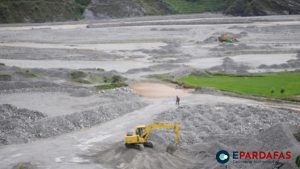
Nepal and China Sign Development Plan 2025-2029 Amid Limited Transparency
Nepal and China have signed a new agreement titled the “Development Plan for 2025–2029” under the framework of the Belt and Road Initiative (BRI) and the Trans-Himalayan Multi-Dimensional Connectivity Network (THMDCN). The agreement was finalized during Prime Minister KP Sharma Oli’s recent official visit to China. However, the detailed text of the agreement, signed between Nepal’s Ministry of Finance and the China International Development Cooperation Agency (CIDCA), has not been made public, raising questions about transparency.
Officials at Nepal’s Ministry of Finance have stated that they are not fully aware of the specifics of the plan and are awaiting further details from the Ministry of Foreign Affairs. While the Ministry of Foreign Affairs recently released the broader BRI cooperation framework signed during the visit, the specific memorandum on the development plan remains undisclosed.
The agreement outlines key areas of cooperation, including infrastructure development, social well-being, disaster prevention, cultural preservation, and human resource development. According to sections of the text seen by sources, the plan focuses on enhancing connectivity through the construction of highways, railways, aviation networks, and power grids, as well as developing infrastructure at border points like Gyirong (Rasuwagadhi), Zangmu (Khasa), Purang (Humla), and Lizi (Mustang). It also includes commitments to support education, healthcare, poverty alleviation, and agriculture through targeted projects described as “small yet smart.” Additionally, it highlights initiatives to share expertise in disaster response and restore cultural heritage sites.
The Chinese government proposed multiple funding sources for the plan, including grants, interest-free loans, concessional loans, and the Global Development and South-South Cooperation Fund. However, the Nepali side rejected all modalities except grants. Controversially, China’s Global Security Initiative (GSI) and Global Civilization Initiative (GCI) were initially included in the proposed text but were removed at Nepal’s insistence before the agreement was signed in Beijing.
Critics have noted that several aspects of the development plan overlap with commitments made in previous agreements, including the 2018 BRI framework. This duplication has led to concerns about the rationale behind the new plan. Officials, however, argue that it is a distinct agreement outlining cooperation areas for the next four years, with specific projects yet to be identified.
The development plan also aligns with China’s Global Development Initiative (GDI), a program that seeks to bolster development in various nations, including Nepal, through partnerships with the United Nations and other international organizations. While Nepal has engaged with the GDI, it has opted not to participate in the GSI and GCI, reflecting a cautious approach to China’s broader geopolitical agenda.
As Nepal and China move forward with implementing the development plan, questions remain about its transparency, funding modalities, and the overlap with prior agreements. Further clarification is expected as the two countries begin selecting and executing specific projects under this new framework.













Comments